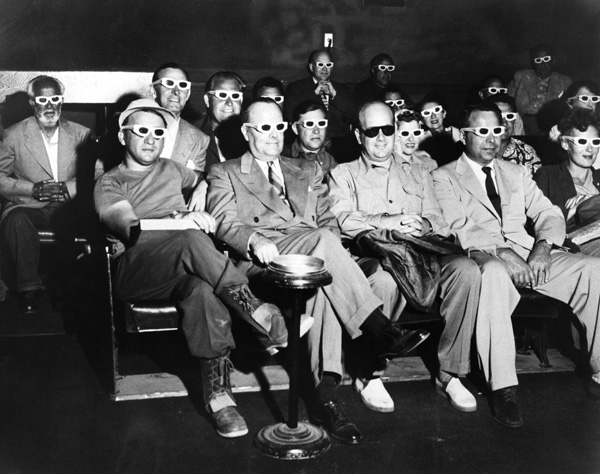Chapter 3. Reading Visuals: Audience
Reading Visuals:
Audience
Introduction

Author
Cheryl E. Ball, Illinois State University and Kristin L. Arola, Washington State University
Activity Objective:
In this tutorial, you will explore how visuals are designed to appeal to different audiences.
Click the forward and backward arrows to navigate through the slides. You may also click the above outline button to skip to certain slides.
Audience: Define

The first definition of audience fits the group you see here—
Audience: Define

Less public, or less performed, texts—
Audience: Define

Writers and designers must always think about their audience when creating a text so that the communication they intend to make will be effective. It is easy to say when we write something creative or funny that it doesn't have an audience—
Audience: Define

The choice of black-
Audience: Define

Visual theorists have noted that when we look at images, we tend to try to see or look at what the subject is looking at—
Audience: Define

Do you think this would have a different audience if it were in color? Why or why not?
Audience: Define

When you know the title of this text, does it change your understanding of its audience?
Audience: Define

How would your understanding of its audience change if the title were, "Sara waits for nightfall to make her break for freedom"?
Audience: Analyze

During the Great Depression, the Works Progress Administration (WPA) was an unprecedented relief measure to offer work to the unemployed on highway, education, art, and public programs. The WPA gave unemployed artists the opportunity to decorate public buildings. Hundreds of posters were also created to publicize health and safety, education, and community programs.
Audience: Analyze

These posters were all aimed at the general public, but we can also identify more specific audiences for individual posters.
Audience: Analyze

The engaging colors and graphics in this image turn math into something fun. It might be aimed at an audience of educators, or at people who might join the cause of the WPA—
Audience: Analyze

This poster has a clear message—
Audience: Analyze

This poster promotes the progress and sense of purpose made possible by the WPA. The iconic blacksmith makes this poster feel like propaganda (reminiscent of the Soviet hammer and sickle or Chairman Mao’s red sun). The primary audience is the general public, as well as politicians and WPA administrators.
Audience: Respond

Work through the following questions to use the concept of audience to analyze this photograph by Lauren Greenfield called “Sara, 19,” which is part of a larger body of work titled “Girl Culture.”
Audience: Respond

Use the space below to answer the following question.
Who do you believe is the intended audience for this photograph? Which elements in the photograph lead you to this conclusion?
Audience: Respond

Use the space below to answer the following question.
Is there any particular person in this photograph with whom the author is asking you to identify? What elements in the photograph lead you to this conclusion? How does that point of view affect the way you read this image?
Audience: Respond

Use the space below to answer the following question.
How would you read this image if it were in black and white? How does the change in color affect your perception of the intended audience? What impact does color have on the elements that draw your eye and attention?
Audience: Respond

Use the space below to answer the following question.
Based on the thinking you have done about the subject and framing of this image, who do you think is the audience?
Congratulations! You have completed this activity.
Total Score: out of (%)
You have received a provisional score for your essay answers, which have been submitted to your instructor.